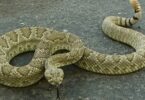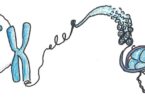Electrostatics MCQ:
The ratio of electric fields on the axis and at equator of an electric dipole will be
(a) 4 : 1
(c) 2 : 1
(d) 1 : 1
+2C and +6C two charges are repelling each other with a force of 12N. If each charge is given –2C of charge, then the value of the force will be
(a) 4N (Attractive)
(b) 4N (Repulsive)
(c) 8N (Repulsive)
(d) Zero
A region surrounding a stationary electric dipoles has
(a) Both electric and magnetic fields
(b) No electric and magnetic fields
(c) Electric field only
(d) Magnetic field only
There are two charges +1 microcoulombs and +5 microcoulombs. The ratio of the forces acting on them will be
(a) 1 : 5
(b) 1 : 1
(c) 5 : 1
(d) 1 : 25
Related: Mitosis practice quiz
Three identical capacitors are combined differently. For the same voltage to each combination, the one that stores the greatest energy is
(a) Two in parallel and the third in series with it
(b) Three in series
(c) Three in parallel
(d) Two in series and third in parallel with it
A charge Q is divided into two parts of q and Q – q. If the coulomb repulsion between them when they are separated is to be maximum, the ratio of Q/q should be
(a) 2
(b) ½
(c) 4
(d) ¼
A metallic sheet is inserted between the plates of a parallel plate capacitor. The capacitance of the capacitor
(a) Increases
(b) Is independent of the position of the sheet
(c) Is maximum when the metal sheet in the middle
(d) Is maximum when the metal sheet touches one of the capacitor plates
Two charges placed in air repel each other by a force of 10–4 N. When oil is introduced between the charges, the force becomes 2.5 x 10–5 N. The dielectric constant of oil is
(a) 2.5
(b) 0.25
(c) 2.0
(d) 4.0
Related: Ray Optics (Physics) Sample paper
Two identical charged spherical drops each of capacitance C merge to form a single drop. The resultant capacitance is
(a) Equal to 2C
(b) Greater than 2C
(c) Less than C
(d) Less than 2C but greater than C
Two equally charged, identical metal spheres A and B repel each other with a force ‘F‘. The spheres are kept fixed with a distance ‘r‘ between them. A third identical, but uncharged sphere C is brought in contact with A and then placed at the mid-point of the line joining A and B. The magnitude of the net electric force on C is
(a) F
(b) 3F/4
(c) F/2
(d) F/4
125 identical drops each charged to the same potential of 50 volts are combined to form a single drop. The potential of the new drop will be
(a) 50 V
(b) 250 V
(c) 500 V
(d) 1250 V
If a unit positive charge is taken from one point to another over an equipotential surface, then
(a) Work is done on the charge
(b) Work is done by the charge
(c) Work done is constant
(d) No work is done
Related: Animal Kingdom (Biology) Practice Questions
A capacitor of capacity C has charge Q and stored energy is W. If the charge is increased to 2Q, the stored energy will be
(a) 4W
(b) 2W
(c) W/2
(d) W/4
Three charges 2q, –q, –q are located at the vertices of an equilateral triangle. At the centre of the triangle
(a) The field is zero but potential is non-zero
(b) The field is non-zero but potential is zero
(c) Both field and potential are zero
(d) Both field and potential are non-zero
In a charged capacitor, the energy resides
(a) The positive charges
(b) Around the edge of the capacitor plates
(c) The field between the plates
(d) Both the positive and negative charges
A charge particle is free to move in an electric field. It will travel
(a) Always along a line of force
(b) Along a line of force, if its initial velocity is zero
(c) Along a line of force, if it has some initial velocity in the direction of an acute angle with the line of force
Related: Endocrine system hormones quiz
A capacitor is charged by using a battery which is then disconnected. A dielectric slab is then slipped between the plates, which results in
(a) Reduction of charge on the plates and increase of potential difference across the plates
(b) Increase in the potential difference across the plate, reduction in stored energy, but no change in the charge on the plates
(c) Decrease in the potential difference across the plates, reduction in the stored energy, but no change in the charge on the plates
The unit of electric field is not equivalent to
(a) N / C
(b) J / C
(c) V / m
(d) J / C – m
An electric dipole is put in north-south direction in a sphere filled with water. Which statement is correct?
(a) Electric flux is coming towards sphere
(b) Electric flux is coming out of sphere
(c) Electric flux entering into sphere and leaving the sphere are same
(d) Water does not permit electric flux to enter into sphere
In Millikan’s oil drop experiment an oil drop carrying a charge Q is held stationary by a potential difference 2400 V between the plates. To keep a drop of half the radius stationary the potential difference had to be made 600 V. What is the charge on the second drop?
(a) Q / 2
(b) Q / 4
(c) Q
(d) 3Q / 2
Related: Gravitation (Physics) Practice Questions
It is not convenient to use a spherical Gaussian surface to find the electric field due to an electric dipole using Gauss’s theorem because
(a) Gauss’s law fails in this case
(b) This problem does not have spherical symmetry
(c) Coulomb’s law is more fundamental than Gauss’s law
(d) Spherical Gaussian surface will alter the dipole moment
Consider the points lying on a straight line joining two fixed opposite charges. Between the charges there is
(a) No point where electric field is zero
(b) Only one point where electric field is zero
(c) No point where potential is zero
(d) Only one point where potential is zero
The distance between the plates of a parallel plate capacitor is d. A metal plate of thickness d / 2 is placed between the plates. The capacitance would then be
(a) Unchanged
(b) Halved
(c) Zero
(d) Doubled
A cube of a metal is given a positive charge Q. For the above system, which of the following statements is true
(a) Electric potential at the surface of the cube is zero
(b) Electric potential within the cube is zero
(c) Electric field is normal to the surface of the cube
(d) Electric field varies within the cube
Related: Kingdom Fungi Sample Questions
The true statement is, on increasing the distance between the plates of a parallel plate condenser
(a) The electric intensity between the plates will remain unchanged
(b) The electric intensity between the plates will decrease
(c) The P.D. between the plates will decrease
(d) The electric intensity between the plates will increase
Cathode rays travelling from east to west enter into region of electric field directed towards north to south in the plane of paper. The deflection of cathode rays is towards
(a) East
(b) North
(c) West
(d) South
Two capacitors of equal capacity are first connected in parallel and then in series. The ratio of the total capacities in the two cases will be
(a) 2 : 1
(b) 1 : 2
(c) 4 : 1
(d) 1 : 4
A pellet carrying charge of 0.5 coulombs is accelerated through a potential of 2,000 volts. It attains a kinetic energy equal to
(a) 1000 kWh
(b) 500 ergs
(c) 1000 joules
(d) 1000 ergs
Related: Sets and Relations (Mathematics) Practice Paper
Putting a dielectric substance between two plates of condenser, capacity, potential and potential energy respectively
(a) Increase, decrease, decrease
(b) Decrease, increase, increase
(c) Increase, increase, increase
(d) Decrease, decrease, decrease
There is 10 units of charge at the centre of a circle of radius 10m. The work done in moving 1 unit of charge around the circle once is
(a) Zero
(b) 10 units
(c) 100 units
(d) 1 unit
0.2 F capacitor is charged to 600 V by a battery. On removing the battery, it is connected with another parallel plate condenser of 1F. The potential decreases to
(a) 100 volts
(b) 120 volts
(c) 300 volts
(d) 600 volts
In a certain charge distribution, all points having zero potential can be joined by a circle S. Points inside S have positive potential and points outside S have negative potential. A positive charge, which is free to move, is placed inside S
(a) It will remain in equilibrium
(b) It can move inside S, but it cannot cross S
(c) It must cross S at some time
(d) It may move, but will ultimately return to its starting point
Related: Microscope questions and answers
Ten capacitor are joined in parallel and charged with a battery up to a potential V. They are then disconnected from battery and joined again in series then the potential of this combination will be
(a) V
(b) 10V
(c) 5V
(d) 2V
The electric field at a point on equatorial line of a dipole and direction of the dipole moment
(a) Will be parallel
(b) Will be in opposite direction
(c) Will be perpendicular
(d) Are not related
A 20F capacitor is charged to 5V and isolated. It is then connected in parallel with an uncharged 30F capacitor. The decrease in the energy of the system will be
(a) 25 J
(b) 200 J
(c) 125 J
(d) 150 J
Biaxial crystal among the following is
(a) Calcite
(b) Quartz
(c) Tourmaline
(d) Selenite
Related: Trigonometry practice problems with answers
Metallic solids are always opaque because
(a) Solids effect the incident light
(b) Incident light is readily absorbed by the free electron in a metal
(c) Incident light is scattered by solid molecules
(d) Energy band traps the incident light
In a crystal, the atoms are located at the position of
(a) Maximum potential energy
(b) Zero potential energy
(c) Infinite potential energy
(d) Minimum potential energy
The valence of the impurity atom that is to be added to germanium crystal so as to make it a N-type semiconductor, is
(a) 6
(b) 5
(c) 4
(d) 3
When a glass rod is rubbed with silk, it
(a) Gains electrons from silk
(b) Gives electrons to silk
(c) Gains protons from silk
(d) Gives protons to silk







Sir ye questions mujhe email kar dijiye